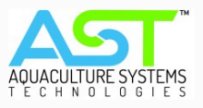August 2017 - JWAS Editor's Choide Awards
Pomeroy, R., H. Navy, A. Ferrer, and A.H. Purnomo. 2017. Linkages and trust in the value chain for small-scale aquaculture in Asia. Journal of the World Aquaculture Society 48(4):542-554.
Linkages and partnerships have become increasingly important for aquaculture businesses. However, small-scale producers often find it difficult to participate in value chains and may find themselves in a weaker bargaining position as a result. Pomeroy et al. (2017) review linkages and trust in value chains for small-scale aquaculture in Asia. The case studies presented for Bangladesh, Cambodia, Myanmar, and the Philippines provide a framework from which to develop response strategies to enhance sustainability and competitiveness.
Naigaga, S., C.E. Boyd, P. Gaillard, H.A. Abdelrahman, and J.J. Molnar. 2017. Assessing the reliability of water-test kits for use in pond aquaculture. Journal of the World Aquaculture Society 48(4):555-562.
Water quality testing kits are used frequently on aquaculture farms because they tend to be relatively inexpensive, easy to use, and provide fairly rapid results. While some older test kits have been shown to be reliable, others have not. Naigaga et al. (2017) evaluated several new test kits that have become available based on the decision that the manager would make following test results. Study results revealed that different kits were more reliable for different variables tested, and recommendations for appropriate uses are provided.
Du, Y., Y. Liu, P. Xiao, L. Meng, and P. Liu. 2017. Development and application of a quantitative real-time polymerase chain reaction assay for the detection of Aeromonas salmonicida. Journal of the World Aquaculture Society 48(4):574-582.
Aeromonas salmonicida, the causative agent of furunculosis, is a ubiquitous disease of salmonids. Traditional detection methods are based on plate cultures, but A. salmonicida has also been associated with a physiological state in some environments in which viable organisms cannot be cultured. Du et al. (2017) developed a quantitative real-time polymerase chain reaction assay to detect A. salmonicida. Study results suggest that the qPCR assay is specific and sensitive for detection of A. salmonicida, with potential for routine testing and research.
Zamora, L.N., K.H. Maxwell, and A.G. Jeffs. 2017. Growth of hatchery-reared juveniles of the Australasian sea cucumber, Australostichopus mollis, fed with artificial and natural diets. Journal of the World Aquaculture Society 48(4):643-655.
Market demand for farmed sea cucumbers has increased rapidly with declining wild stocks. However, information necessary for development of artificial diets for early juveniles is scarce. Australostichopus mollis has been co-cultured successfully with shellfish in New Zealand. Zamora et al. (2017) showed the feasibility of artificial diets to replace naturally available ingredients. Given the high-value export market, such research has potential to lead to greater supplies of hatchery-reared juveniles for expansion of sea cucumber production.
















